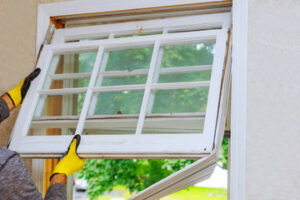Junk Removal Murrieta is no longer just about clearing clutter from spaces. It is now reshaping how society handles excess and waste. As consumption continues to rise, so does the need for responsible disposal. This growing demand has turned junk removal into a critical industry.

Many services are now evolving to prioritize item recovery over landfilling. Teams are trained to identify pieces that can be repaired, reused, or donated. The goal is to keep as much out of landfills as possible. This approach supports the rising circular economy movement.
Smart sorting technology is beginning to play a role in junk removal. Devices can scan, categorize, and tag items before collection. These systems speed up post-collection processing and improve recycling accuracy. The integration of AI helps reduce human error during sorting.
Eco-data tracking is becoming a new trend in this industry. Clients are given reports showing the environmental impact of their junk. They can see what percentage was recycled, donated, or destroyed. This transparency helps build awareness and trust.
Digital platforms are enabling customers to schedule, track, and verify junk pickups instantly. Clients can upload photos, set pickup zones, and even estimate weight in real time. These systems streamline the service and reduce delays. It creates convenience without sacrificing accountability.
Community-focused junk removal projects are on the rise. Instead of mass disposal, some teams host local exchange events before hauling. Items are made available for free pickup within the community. This ensures one person’s waste becomes another’s resource.
Specialized training is being given to junk removal teams for handling sensitive waste. Items like electronics, expired medicines, and bio-hazardous debris require careful handling. New protocols and gear ensure that these materials are safely removed. The risk of contamination or injury is reduced significantly.
In urban areas, micro-junk removal vehicles are gaining popularity. These electric carts or compact trucks navigate narrow streets efficiently. They carry tools, sensors, and compactors on board. The aim is to serve high-density zones with minimal disruption.
Remote assessment tools are helping teams plan pickups before arriving. Using video calls or 3D scans, crews assess volume and hazard levels. This reduces the guesswork and speeds up job completion. It also ensures the right number of staff and tools are dispatched.
Upcycling partnerships between junk haulers and artists are adding value to discarded materials. Some items are taken directly to studios or craft centers. They are turned into furniture, installations, or wearable items. This partnership blends environmental action with creativity.
Deconstruction services are now paired with junk removal. Instead of demolishing and dumping, structures are carefully taken apart. Each part is sorted and directed to salvage centers. This process reduces waste while recovering valuable materials.
Sustainability certifications are now available for junk removal providers. These badges indicate that the service meets specific environmental standards. Customers can choose teams that align with their values. The certification process promotes industry-wide responsibility.
Junk removal apps now offer real-time carbon footprint calculations. The software analyzes transport routes, fuel usage, and item weight. It provides clients with data they can use for offsetting initiatives. This kind of insight empowers eco-conscious decisions.
Corporate junk removal is evolving into full workspace lifecycle management. Offices now schedule monthly or quarterly cleanouts as part of operations. This keeps clutter under control and improves staff productivity. It also supports data security when disposing of old devices.
The growing awareness of digital hoarding is changing what counts as junk. Some services now offer digital cleanup alongside physical junk removal. They help clients delete old files, clear cloud storage, and recycle electronics. This creates a cleaner physical and digital environment.
Many teams now offer junk removal with mental wellness in mind. Clutter has been linked to stress, anxiety, and decreased focus. Removing unnecessary items is promoted as a form of self-care. Teams approach each project with sensitivity and respect for personal boundaries.
Some companies are incorporating energy generation into junk disposal. Biodegradable waste is processed into compost or bio-gas. The gas powers facilities or gets returned to the grid. This model turns trash into a renewable asset.
Rural junk removal is being enhanced through drone-supported logistics. Drones scout properties for large or dangerous items before team arrival. They provide aerial footage to help strategize removal. This reduces risks and improves time efficiency.
Social media is being used to document before-and-after junk removal stories. These stories inspire others to take action in their own spaces. They also demonstrate the transformation value of professional removal. The visual proof becomes part of marketing and motivation.
Services now include emotional support consultations for major cleanouts. Hoarding, loss, and trauma often result in accumulated junk. Teams collaborate with counselors to guide clients through the process. This holistic method respects both physical and emotional space.
New biodegradable bags and bins are being used during junk collection. These materials break down faster than traditional plastics. It reduces the ecological footprint of the collection process itself. Even the containers reflect a sustainable philosophy.
Gamification features are being added to junk removal apps. Users earn points for each cleanout and receive badges for milestones. This makes the process more engaging and rewarding. It turns decluttering into a personal achievement journey.
In some regions, junk removal is connected with food recovery programs. Teams collect sealed, unused pantry items from cleanouts. These are inspected and redirected to food banks. The effort combines waste reduction with hunger relief.
Hybrid vehicles are replacing older gas-guzzling junk trucks. These models emit less pollution and reduce fuel expenses. They reflect a cleaner approach to physical service delivery. Clients often prefer working with providers who invest in green fleets.
Junk removal scheduling now aligns with seasonal sustainability themes. Spring cleaning services include garden waste composting. Autumn cleanups offer e-waste recycling for old school devices. Services adjust to reflect the patterns of modern life.
There is growing interest in anonymous junk removal services. Clients with sensitive waste can request no-contact pickup. Items are tagged and removed without interaction. This offers discretion while maintaining professional standards.
Waste education is now included in post-removal services. Clients receive guides on preventing future junk build-up. These include donation centers, upcycling ideas, and minimalism tips. It promotes long-term change instead of short-term fixes.
Biometric scanning tools are used in high-security cleanouts. Devices ensure that only authorized personnel handle sensitive items. This is vital in junk removal involving medical, financial, or legal waste. It prevents data leaks and unauthorized access.
Some companies now offer instant item auctions as part of the removal process. Valuable goods are listed online while the team is still on-site. If sold, pickup is redirected to the buyer. This adds a real-time recovery layer before disposal.
Digital twins of large commercial spaces help track junk over time. 3D replicas show where clutter builds up and how often. This insight improves planning and resource allocation. It shifts junk removal from reactive to predictive.
Solar-powered equipment is replacing traditional gas tools in many crews. Tools like compactors, grinders, and lifts now run on renewable energy. This reduces noise, heat, and emissions during operations. It improves safety and efficiency in both residential and commercial zones.
Peer-to-peer junk redistribution platforms are emerging alongside professional services. These allow neighbors to offer and claim unwanted items before they are hauled away. It builds local connections and reduces unnecessary disposal. The model blends digital convenience with community values.
Emergency junk removal services are now available during natural disasters. Floods, fires, and storms often leave behind debris needing quick removal. Teams work alongside emergency responders to restore safety. This service supports both public health and morale.
Robotic arms are being tested for high-risk junk removal. These machines handle sharp, heavy, or hazardous materials safely. They reduce technician injury and speed up complex tasks. Automation enhances capability without replacing human judgment.
Color-coded sorting is becoming common during multi-item pickups. Each category has a specific container or tag for processing. This ensures items end up in the right recovery stream. It increases recycling efficiency and minimizes contamination.
Drone-assisted marketing is also being used by junk removal services. Aerial footage showcases successful transformations from clutter to clean. This visual content is shared across social platforms for impact. It highlights the emotional power of a junk-free space.
Reverse logistics is gaining attention within commercial junk removal. Companies want old inventory, outdated equipment, or returns cleared responsibly. These are routed back into manufacturing or resale chains. It converts disposal into circular asset recovery.
Clients now use virtual consultations before committing to junk removal. Video calls help assess complexity, pricing, and emotional concerns. It builds trust and provides tailored service plans. This makes the client feel seen and supported.
Color psychology is subtly entering the junk removal conversation. Bright bins, cheerful uniforms, and clean graphics reduce stress during cleanup. The visual language used can impact the energy of the space. Uplifting colors make the process less overwhelming.
Noise reduction tools are now standard in junk hauling operations. Soft-close bins, electric carts, and padded lifts lower disruption. This is especially valuable in residential or hospital zones. Quiet efficiency is the new norm in premium services.
AI is being used to analyze trends in junk generation across cities. Data helps policy makers understand waste behaviors. These insights shape urban planning, zoning, and recycling infrastructure. Junk removal becomes part of smart city design.
As the future unfolds, junk removal will continue to blend efficiency, compassion, and innovation. The act of clearing space is now tied to sustainability, emotion, and technology. What once was simply discarded is now a resource or a second chance. Junk removal, reimagined, is truly reshaping how the world lets go.



